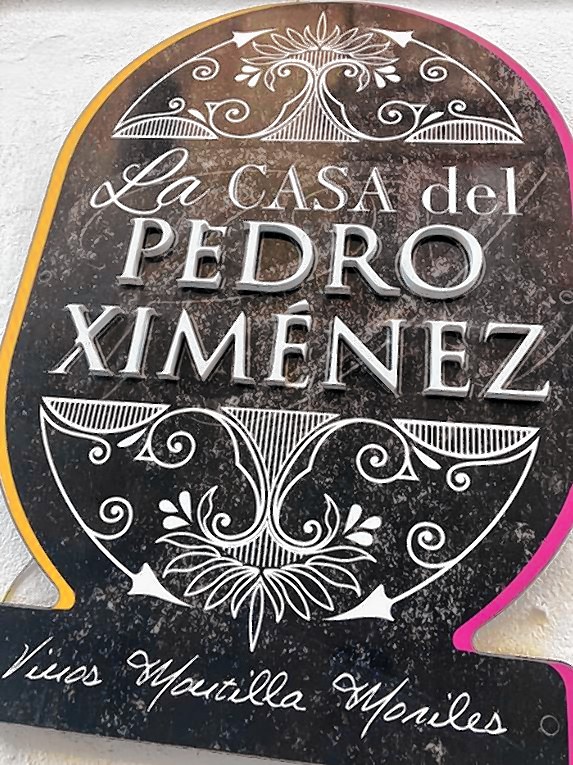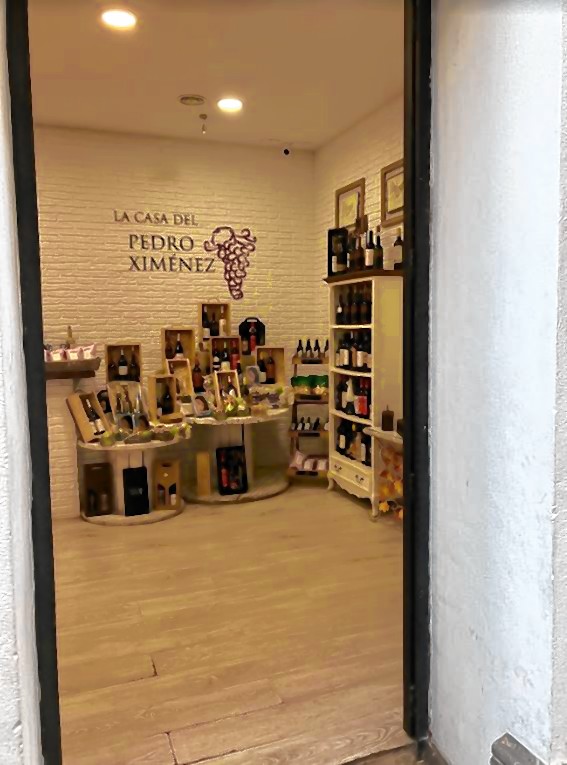By Monte Belmonte
For the Valley Advocate

COURTESY MONTE BELMONTE
I did get to try some wines from just outside Córdoba around the southernmost autonomous region of Spain: Andalucía. Andalucía is actually considered by most wine publications to be wine country. And the style of wine that Andalucía is most famous for is Sherry. Sherry is a fortified wine, meaning they add neutral grape spirits to up the booze factor of the wine.
As a self-proclaimed wine snob, I admit that it is shameful that I have never been to any “wine country,” in any country, anywhere. Since grapes can grow in virtually every country, meaning wine could be made in virtually every country, any country could be considered “wine country.” But you and I know that is not what people mean when they use that term. They mean Napa, Sonoma, Burgundy, Bordeaux, Chianti, Rioja. The list is long. But of all the aforementioned places, I have never visited a one. I have visited local spots in our Massachusetts version of wine country: Glendale Ridge, Black Birch, even Truro Vineyards on The Cape. But we can’t claim to carry the mantle of being wine country. Even the Finger Lakes in New York, which I also have not visited, has a somewhat spurious claim to the moniker.
When my wife had an opportunity through her work at Smith College to go to Spain, and asked if I wanted to tag along, I was thrilled with the possibility. While I have spent a great deal of time in the Middle East and Asian-subcontinent, I had never been outside an airport in Europe. Finally, my opportunity to visit wine country. But reader, I tell you I have failed again.
The most famous wine country in Spain is Rioja. And I am a huge fan of wines from there. I couldn’t wait to see how far the Smith program that we would be visiting in Córdoba would be from real wine country. Turns out, it’s 694 kilometers away. I’m trying to be fancy and European and use kilometers. But that is about the distance from where I live in Turners Falls to Mount Vernon, Virginia. We would only be spending a week in Córdoba, so a day trip to Rioja seemed out of the question. It would have been easier for me to leave Europe and go to Africa than to get to wine country.
But since almost everywhere is wine country, I did get to try some wines from just outside Córdoba around the southernmost autonomous region of Spain: Andalucía. Andalucía is actually considered by most wine publications to be wine country. And the style of wine that Andalucía is most famous for is Sherry. Sherry is a fortified wine, meaning they add neutral grape spirits to up the booze factor of the wine. Sherry is an acquired taste. Even for people who claim to love wine. I have acquired the taste. There are different styles of Sherry. I prefer the more savory styles made predominantly from the Palomino grape. But when I was in Andalucían wine country I had the sweeter style Sherry, made from the grape Pedro Ximénez.
Pedro Ximénez sounds like an hombre’s name. And it very well may be. There are many apocryphal tales of how the grape got that name. A Spanish soldier, or perhaps Catholic cardinal, bringing the grape from Germany to Andalucía. There is a legend saying a person named Pedro from the Andalucían village of Jiménez became an expert in vinifying this particular grape. But the origin story I like the best has more to do with the DNA of the grape itself.

COURTESY MONTE BELMONTE
DNA testing in the last few decades seems to show that Pedro Ximénez is the offspring of an Arabic grape that was once grown in southern France and might have been introduced to Andalucía when the Moors were still in charge there.
DNA testing in the last few decades seems to show that Pedro Ximénez is the offspring of an Arabic grape that was once grown in southern France and might have been introduced to Andalucía when the Moors were still in charge there. Andalucía, and Córdoba in particular, is known for its multicultural, ecumenical history-with Muslims, Jews, and Christians living in harmony. For a little while, at least. When the Moors were in charge, they were mostly tolerant of “the people of the book.” And since Muslims, Christians and Jews all recognized Father Abraham, the Moors left most of them alone, as long as everyone knew who was in charge. We won’t mention what they did to the Pagans. The Moors were eventually pushed out. And it turned out tragically for the Sephardic Jews. Nobody expects the Spanish Inquisition. But at least the DNA of this one grape was, in and of itself, a microcosm of trying to get along. That’s sweet.
And so is the wine. After Pedro Ximénez is picked, they dry the grapes on maps for a couple of weeks. This raisining concentrates the sugars. Then they squeeze the berries and partially ferment the juice. Afterwards, the juice is fortified and aged using the solera process, where wines of different ages are blended. This whole undertaking makes for a very dark, very sweet dessert Sherry. Some people even use Pedro Ximénez to top ice cream. But I’ll take hot fudge any day.
Sweet wine is not really my thing. I’m not being entirely truthful. I’m a sucker for Port. And one time I got to try a Chateau d’Yquem Sauternes. It was practically the most magical wine experience I’ve ever had. I almost never buy sweet wine to drink at home. But was I disappointed to be in the sweet wine country of Andalucía versus succulent, savory wine country of Rioja? Not one bit.
Part of the experience of being a wine snob is the circumstances in which you are enjoying the wine. One of the greatest Champagne experiences I ever had was when my dear friend was moving from Northampton and we were toasting with Veuve Clicquot out of Hot Chocolate Run mugs, while his wine glasses were all in boxes. The Pedro Ximénez Sherry was not necessarily the greatest wine I have ever had, but I had a blast the entire time I was in Andalucía. The fact that every meal starts with a beer and slips into a bottle or two of wine. The incredibly delicious and decadent afternoon meal. My favorite being a black rice and squid ink paella that looked as dark as night on the plate. The siesta that follows. Getting back out on the town at 8 or 9 at night and, allegedly, having only a small meal of tapas for dinner but with the likelihood of it devolving into more decadent levels of food and more bottles of wine. Walking around an ancient walled city that is brimming with life until the wee hours of the morning. Chatting with rising Smith seniors about what they will miss about Spain and what they have missed about Northampton. Spending an entire week with my gorgeous wife in a gorgeous place. And, oh yes, Pedro Ximénez. Especially when the waiter mixes it with some other beverage, and calls it a “fitty-fitty.” My slightly jingled state and my broken Spanish can only understand “fitty” percent of what he’s saying. The entire experience made me feel like I was in wine county.
Pedro Ximénez is not the most delicious, exciting, trendy, sought-after grape in all the world, or even in all of Spain. But perhaps Pedro Ximénez’s story is what makes it great. A grape harvested so close to U.N. heritage sites that have historically stood for the ideals that we humans can all live in harmony. A grape with mixed Arabic and European lineage in its DNA. Maybe Pedro Ximénez holds hope for us all. As my drinking buddy, The Wine Squirrel, once said to me, most juice comes out of most grapes clear in color. No matter what color the skin is. We are all mostly the same on the inside. There is hope in that. The hope that the world is just one big wine country.


